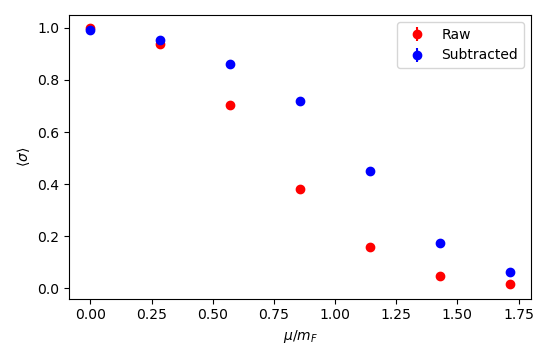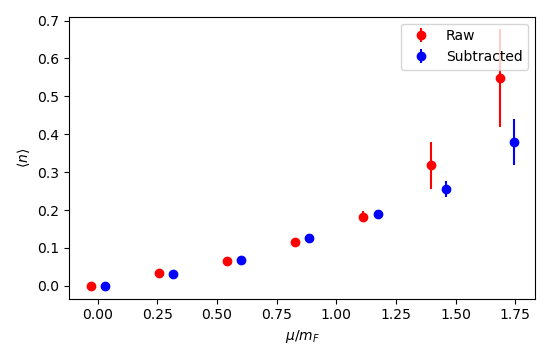Machines Learning to Solve Sign Problems




We must sample with respect to the quenched Boltzmann factor. Observables are computed via \[ \langle \mathcal O \rangle = \frac{\langle\mathcal O e^{-i S_I} \rangle_Q}{\langle e^{-i S_I}\rangle_Q} \]
The sign problem is measured by \[ \langle \sigma\rangle \equiv \frac Z {Z_Q} \sim e^{-\alpha^2} \]
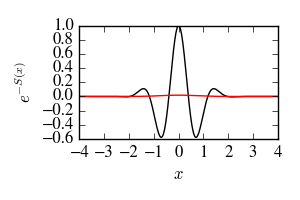

The Boltzmann factor \(e^{-S}\) is complex. Sample with \(e^{-S_R}\) and reweight. \[ \langle\sigma\rangle = \frac{\int e^{-S}}{\int |e^{-S}|} \]
Relativistic fermions in \(1+1\) dimensions with a repulsive 2-body interaction. \[ S_{\mathrm{thirring}} = \frac 1 {2 g^2}\sum_{x,\mu} \big(1 - \cos A_\mu(x)\big)- \frac{N_f}{2} \log \det K[A] \]
The \(N_f=1\) theory is exactly solvable. Strong coupling marked by \(m_B \sim m_F\).

Evolve every point on the real plane according to the holomorphic gradient flow: \[ \frac{d z}{dt} = \left({\frac{\partial S}{\partial z}}\right)^* \] For short flow times, improves the average sign by decreasing the quenched partition function. (Maximally efficient!) \[ Z_Q = \int dz\, |e^{-S}| \]
For an \(8^4\) QCD lattice, evaluating the Jacobian determinant requires a \(10^5 \times 10^5\) matrix. (\(\sim 10\) times larger than the Dirac matrix)

Algorithm:

Downsides:
Evaluating \(\langle \sigma \rangle\) itself is hard. The sign problem manifests as a signal-to-noise problem.
But, we don't need to! We just need to minimize \(Z_Q\), and \[\color{green} \frac{d}{d t}\lambda = - \frac{\partial}{\partial \lambda} \log Z_Q \] has the form of a quenched (i.e., sign-free) observable!
This isn't complex analysis---it's a general principle. Contour deformations:
Any strategy with those properties can be optimized in the same way.

Best results obtained with a simple ansatz, rather than a deep neural network:
\[
\mathop{\mathrm{Im}} A_0(x) = a
+ b \cos \mathop{\mathrm{Re}} A_0(x)
+ c \cos \mathop{\mathrm{Re}} 2 A_0(x)
\]
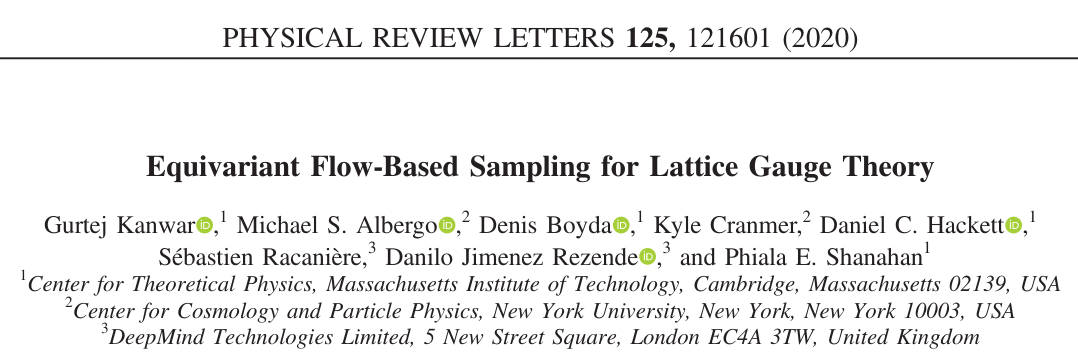
Goal: sample from \(p(z)\)
A normalizing flow is a map \(\phi\) \[ \int_{-\infty}^x e^{-x^2} dx = \int_{-\infty}^{\phi(x)} p(z)\, dz \]
Sample from the Gaussian, then apply \(\phi\).
(Any easily sampled distribution can replace the Gaussian.)
What if \(\phi(x)\) is complex?
Complex normalizing flow \(\Rightarrow\) contour deformation
Here's a normalizing flow for scalar field theory:
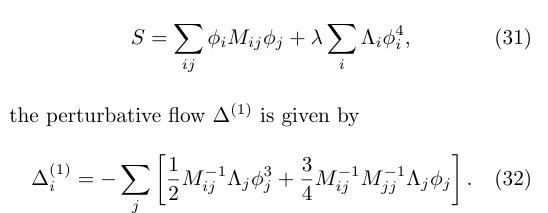
What if \(M,\Lambda\) are complex? Doesn't matter; still a good normalizing flow.
At \(\mathop{\mathrm{Im}}\lambda \ne 0\), this model has a sign problem. Train a contour as before, and the sign problem nearly disappears:
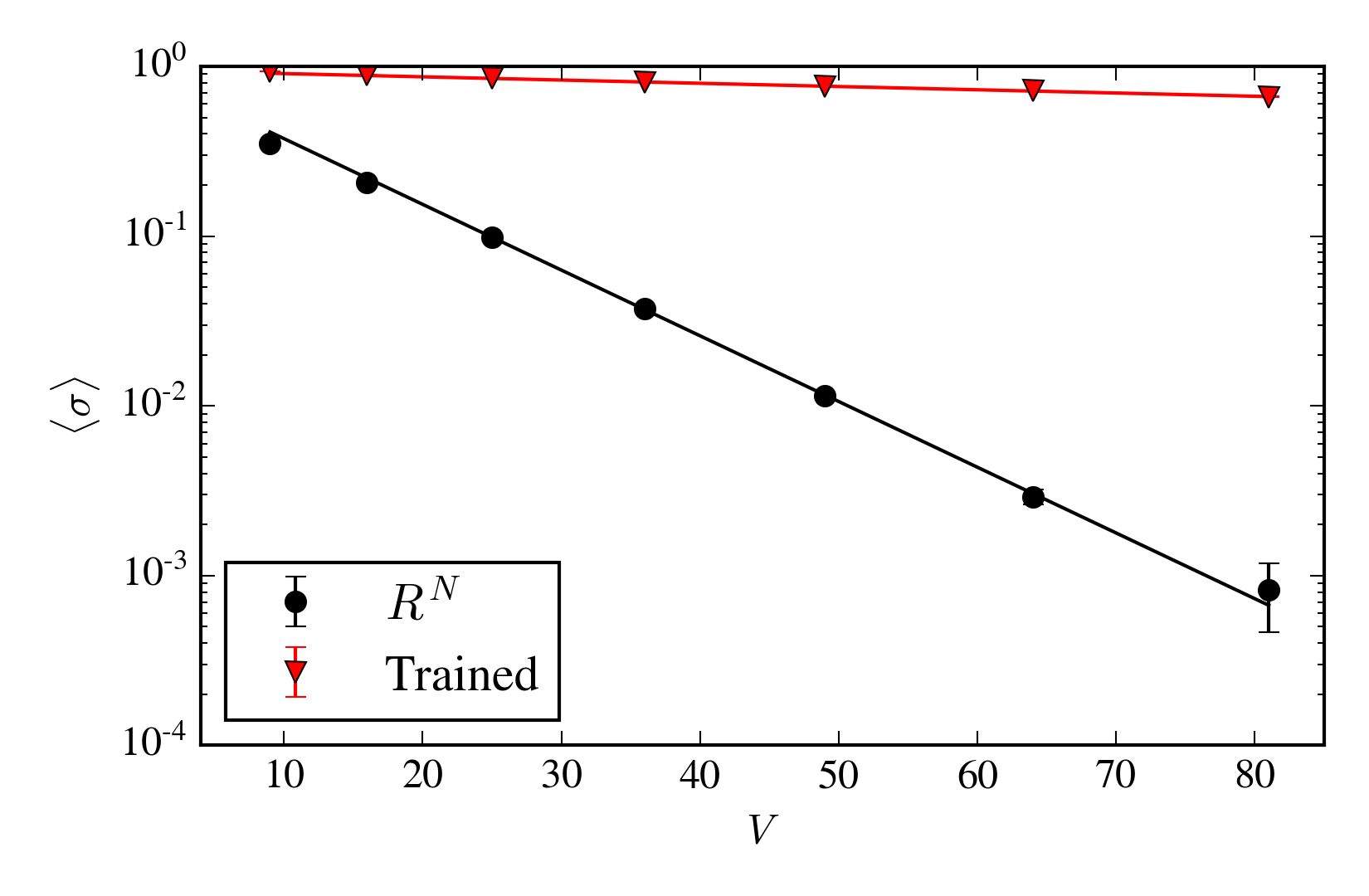
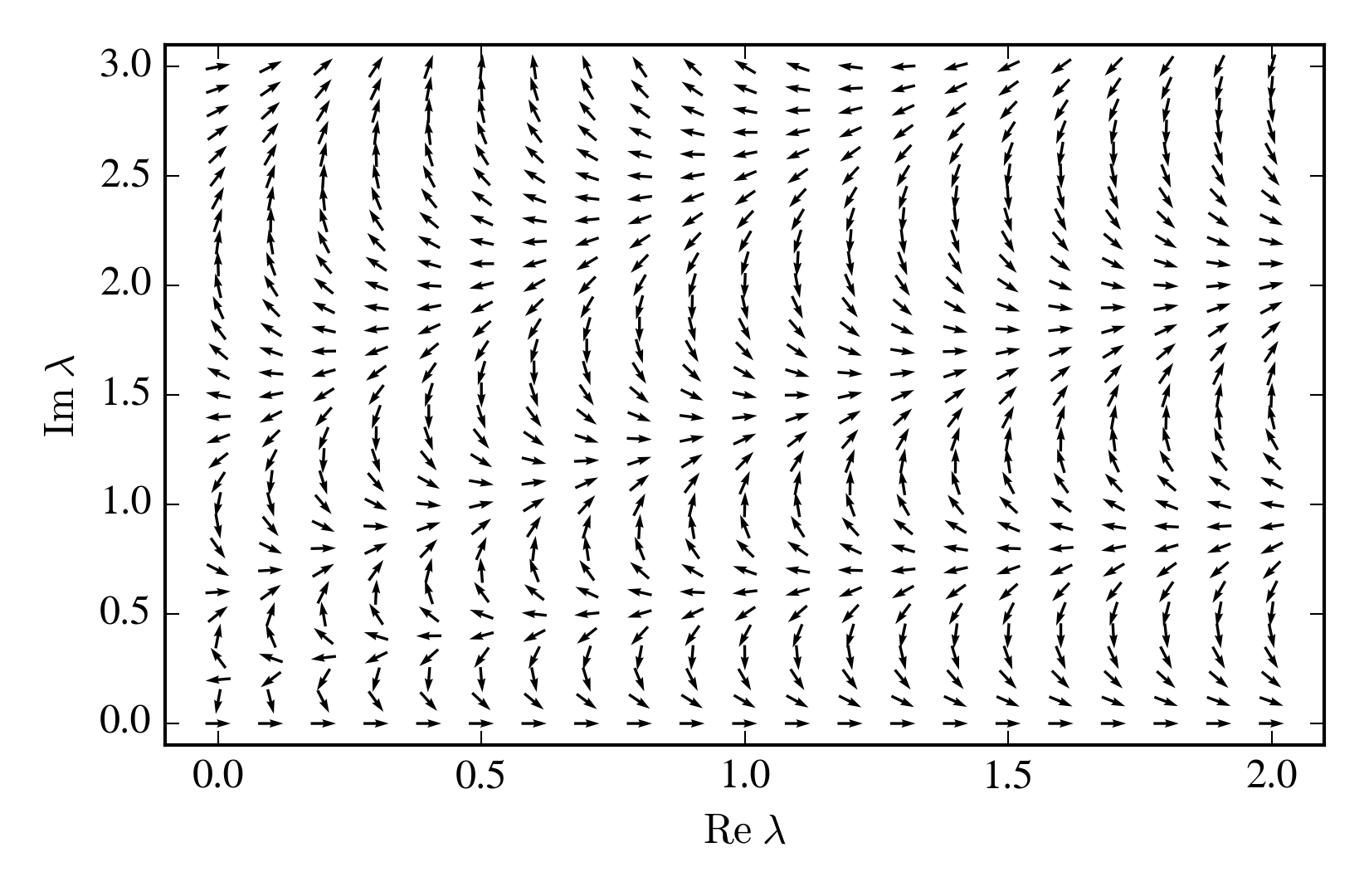
For \(\mathop{\mathrm{Re}}\lambda < 0\) the partition function can be defined only by analytic continuation. This is a "worse than infinitely bad sign problem".

Wanted: a manifold such that \[ \left|\int e^{-S} \;d z\right|=\int \left|e^{-S} \;dz\right| \]
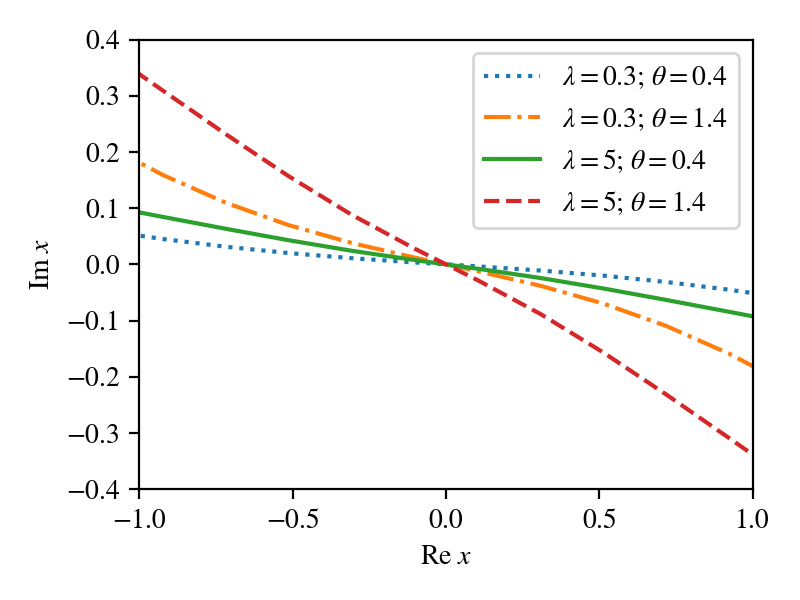
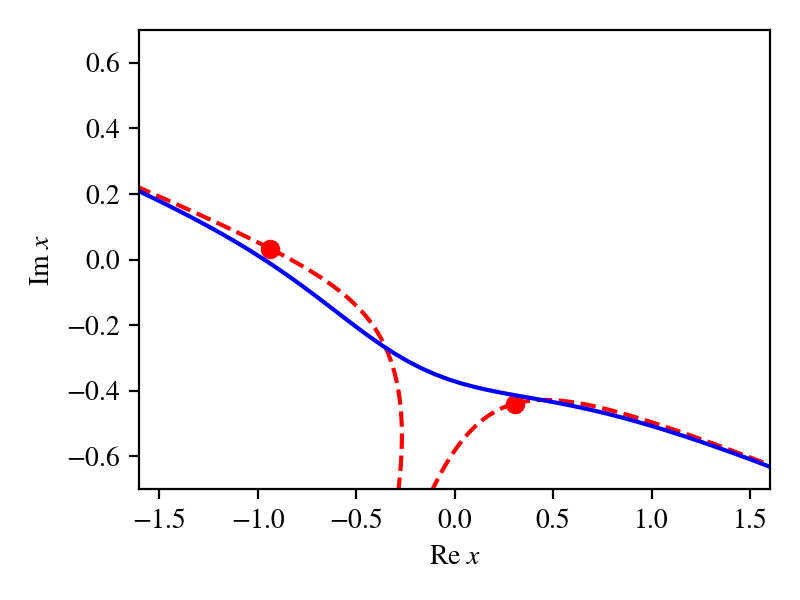
\[Z = 2 \pi \epsilon\]
Quenched partition function is \(O(1)\)
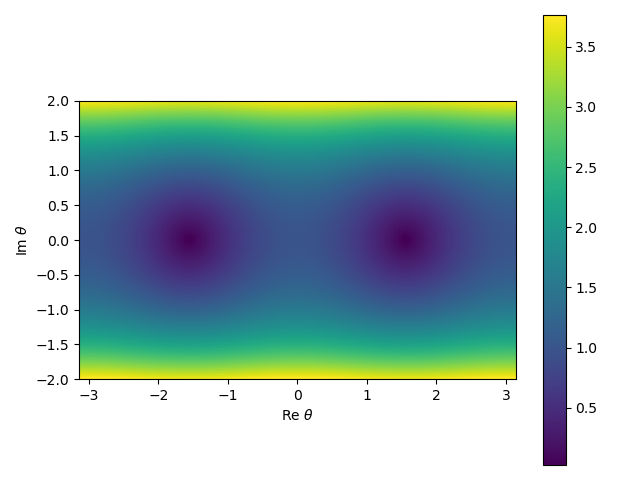
Physics (the partition function as a function of various sources) is unchanged, but the sign problem...
\[ Z_Q = \int \left|e^{-S(\phi)}\right| \ne \int \left|e^{-S(\phi)} - g(\phi)\right| = \tilde Z_Q \]All contour deformations are subtractions: \(\int d\phi\, f(\phi) - f(\tilde\phi(\phi)) = 0\)
This is not unique, but it is "close" to unique. Adding a generic function \(\tilde g \sim e^{-S}\) breaks the subtraction. Adding a generic function \(\tilde g \sim Z_Q\) is okay.
General trick to obtain functions that integrate to \(0\): \(g(\phi) = \frac{\partial}{\partial \phi_i} v_i\). (Almost useful for machine learning, but \(v \sim e^{-S}\) is required.)
Heavy-dense limit: a lattice expansion in large \(\mu\): \[ \det K[A] = {\color{blue}2^{-\beta V} e^{\beta V \mu + i \sum_x A_0(x)}} + O(e^{\beta (V-1) \mu}) \]
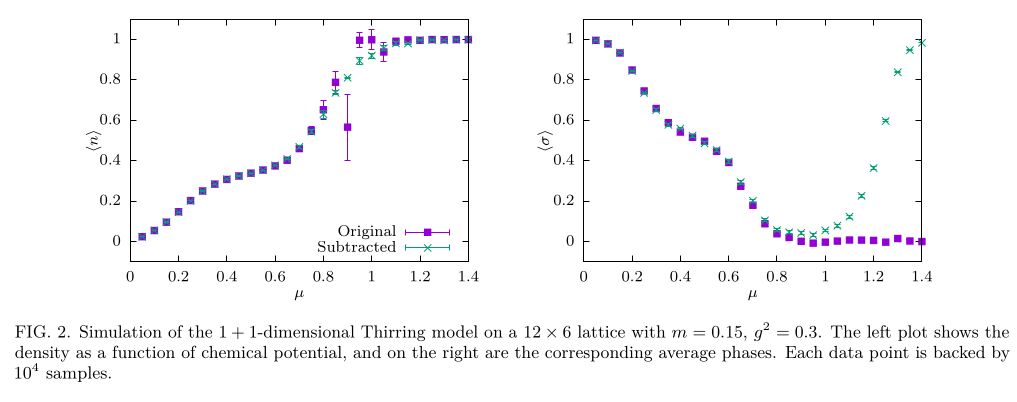
This form of subtraction is the same, at leading order in \(v\), as performing an infintesimal contour deformation.
Other procedures for measuring observables generally result in terrible signal-to-noise.
Training a 2-layer network on a 6-by-6 lattice with \(m_B = 0.33(1)\), \(m_F=0.35(2)\):
